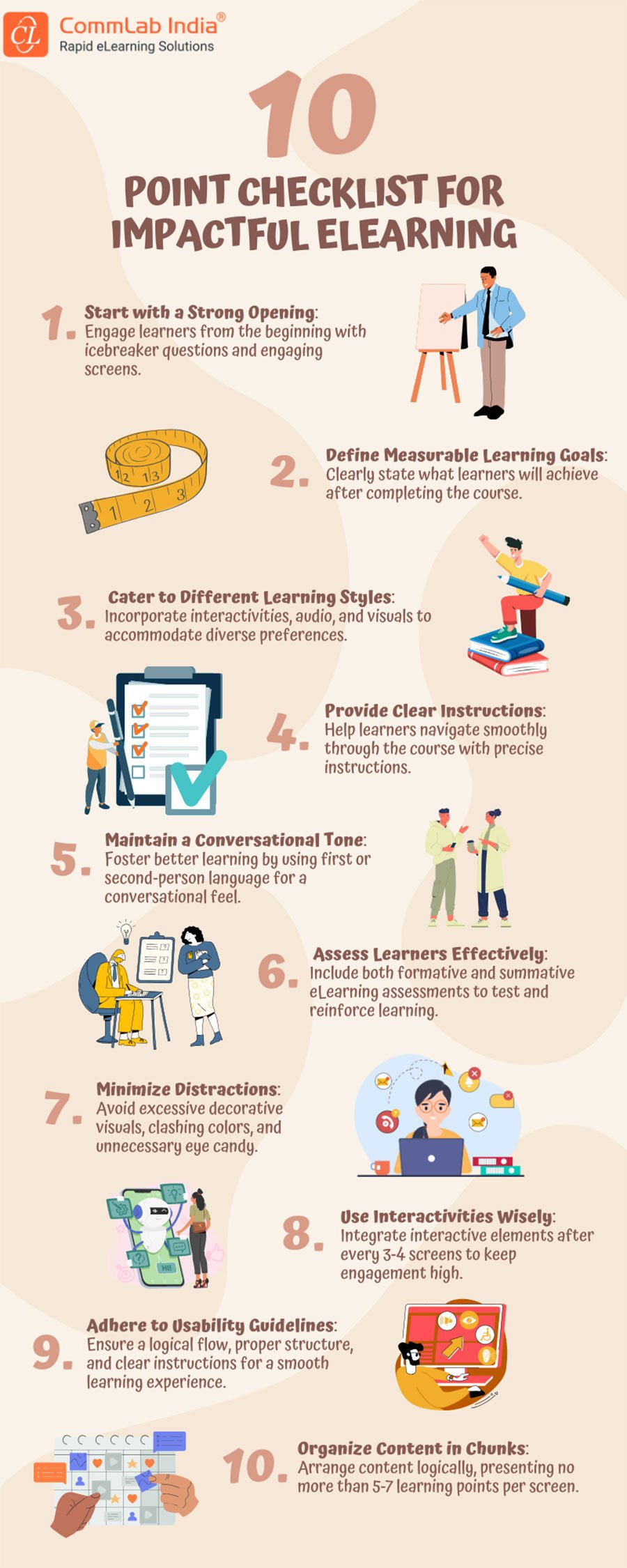8 Mind-Blowing Secrets of eLearning You Can't Afford to Miss!

So far, our blogs have discussed a lot about the world of eLearning and why this online learning approach is key for corporate training success. And now, we are back with a blog that reiterates it along with some facts and stats put forward by industry leaders.
Let's dive in...
eLearning: Empowering Corporate Excellence!
It offers:
- Flexibility
- Cost-Efficiency
- 3. Scalability
1. eLearning: The Need for Speed
In the fast-paced world of business, we all want to learn and adapt quickly, right? Well, that's where eLearning shines! A Brandon-Hall Study found that eLearning typically requires 40% to 60% less time than traditional classroom learning. Imagine leveling up your skills in less time! 🚀
For instance, take IBM, a global tech giant. When they introduced eLearning into their training regimen, employees learned a whopping five times more without spending extra hours in training. Talk about efficiency!
2. Microlearning: Small Bites, Big Impact
Microlearning offers learning in the form of bite-sized nuggets that can be gobbled up whenever needed. A 2018 study that microlearning modules can boost understanding, retention, and application levels by at least 18%. So, don't underestimate the power of short, focused eLearning modules.
Bonus: Microlearning is mobile-friendly, making it a top choice for on-the-go learners. 📱
3. eLearning on a Budget
Who doesn't love saving on expenses, especially when it comes to training? eLearning does just that! It significantly slashes training costs, including instructor fees and travel expenses. In fact, IBM claimed they delivered five times the training at only a third of the cost after making the switch to eLearning. That's a whopping $200 million saved! 💰
4. The Rise of Learning Management Systems (LMS)
Managing training programs can be a handful. That's where Learning Management Systems (LMSs) come to the rescue. They help companies assign courses, track progress, and generate reports. No wonder their popularity is soaring! Statistics show that the Learning Management System Market size was valued at USD 38.7 billion in 2022 and is predicted to soar at a CAGR of 17% between 2023 and 2032.
→ Access Now: eLearning Trends – A View from the Trenches [Webinar]
5. Game On: Gamification in eLearning
Let's face it; learning can sometimes feel like a chore. But what if we turned it into a game? Game-based eLearning courses do just that! They make corporate training engaging and fun. According to a MarketsandMarkets report, the game-based learning market which raked in $11 billion in 2021, is projected to hit a whopping $29.7 billion by 2026. So, get ready to level up your online training with a little friendly competition!
6. eLearning Goes Mobile
With smartphones glued to our hands, it's no surprise that mobile learning (m-learning) is on the rise. M-learning lets you access courses wherever, whenever, it is also a great opportunity for personalized training. According to Mordor Intelligence, the mobile learning market size is expected to increase from USD 60.97 billion in 2023 to USD 184.42 billion by 2028.
7. Lights, Camera, Action: The Power of Video eLearning
Videos aren't just for entertainment; they're also a key player in eLearning. They keep learners engaged and help them connect instantly with the content. Plus, they're perfect for demonstrating products and teaching those soft skills.
In fact, According to a study conducted by Synthesia, 97% participants find video effective in helping employees retain information offered during corporate training. So, get ready for some screen time – the educational kind!
8. eLearning: Green and Clean
In a world striving for sustainability, eLearning is an eco-warrior. It's paperless, requires no travel, and uses fewer resources, saving loads of energy. According to Britain's Open University, eLearning courses consume 90% less energy and produce 85% fewer CO2 emissions per student than traditional face-to-face courses. Mother Earth approves! 🌍
Amazing aren’t they? Now that you’re aware of the facts, you might want to start off with your eLearning endeavor. Here is a checklist to make your corporate eLearning projects more impactful

Wrapping Up
Want to Maximize Your Training ROI? Jump on the eLearning bandwagon now! Here are a few trends you need to know about before pressing the accelerator!



![Get Your Boss to Say YES for eLearning – Build a Winning Business Case [Infographic]](https://blog.commlabindia.com/hubfs/Imported_Blog_Media/elearning-business-case-info.jpg)

![Unlocking Custom eLearning Excellence with the Right Tool [Infographic]](https://blog.commlabindia.com/hubfs/blogs/custom-elearning-tool-selection-infographic.jpg)